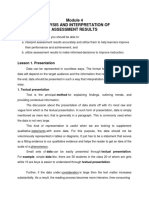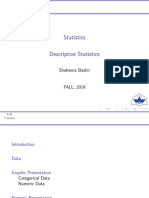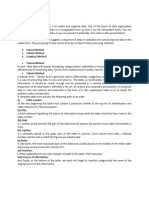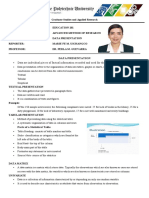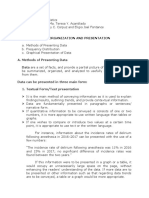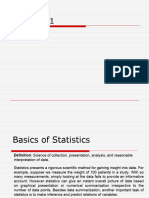0% found this document useful (0 votes)
16 views4 pagesLesson 5 - Presentation of Data
The document outlines various methods for presenting data, including textual, tabular, and graphical formats. It provides examples of each presentation type, such as a frequency distribution table and different types of graphs like line graphs, bar graphs, and pie charts. Additionally, it details the components of a statistical table and instructions for constructing a histogram.
Uploaded by
Acelo JeianCopyright
© © All Rights Reserved
We take content rights seriously. If you suspect this is your content, claim it here.
Available Formats
Download as DOCX, PDF, TXT or read online on Scribd
0% found this document useful (0 votes)
16 views4 pagesLesson 5 - Presentation of Data
The document outlines various methods for presenting data, including textual, tabular, and graphical formats. It provides examples of each presentation type, such as a frequency distribution table and different types of graphs like line graphs, bar graphs, and pie charts. Additionally, it details the components of a statistical table and instructions for constructing a histogram.
Uploaded by
Acelo JeianCopyright
© © All Rights Reserved
We take content rights seriously. If you suspect this is your content, claim it here.
Available Formats
Download as DOCX, PDF, TXT or read online on Scribd
/ 4


